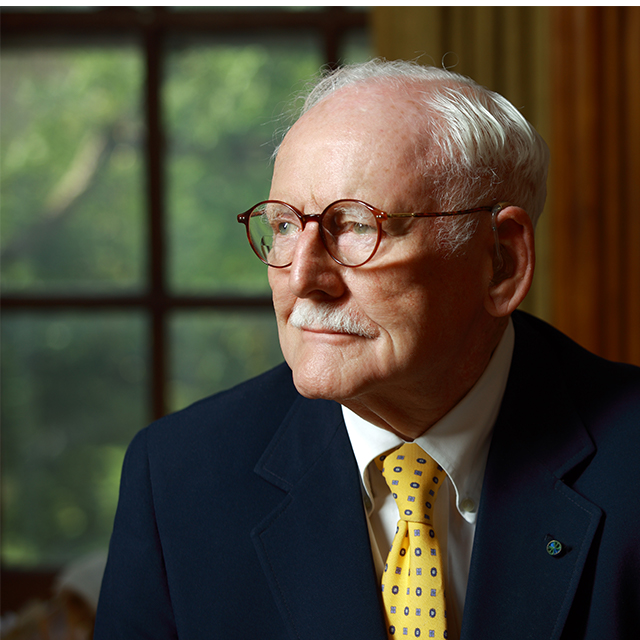A seemingly tireless physician and researcher, John G. Bartlett was famous for arising at 2 a.m. so he could “get in at least five or six hours of work before the phone starts ringing or someone knocks on the door.”
Bartlett built the Infectious Diseases Division in The Johns Hopkins Hospital into one of the nation’s premier HIV/AIDS centers. In the 26 years that Bartlett led it — from 1980 to 2006 — it grew from just three full-time staff members and a budget of $200,000 to a roster of 55 faculty, a staff of 177, and a research budget of $40 million, one of the medical school’s largest.
By the time Bartlett stepped down, it was treating more than 5,000 patients with HIV/AIDS annually with the latest in medical protocols — many of which he helped validate through clinical trials. He was, one admirer wrote, “a ray of hope for people living with HIV/AIDS.”
Bartlett died of pneumonia on January 19, 2021. He was 83.
When the American Society for Microbiology honored Bartlett in 2011, Sherwood L. Gorbach, editor-in-chief of the journal Clinical Infectious Diseases, observed that “it is not an overstatement to say that John Bartlett is one of the giants of contemporary infectious diseases and microbiology.”
Bartlett was also renowned for his 1978 discovery of what he called “the bug” — Clostridium difficile, or C. difficile — which causes antibiotic-associated colitis. He also specialized in researching and treating the hepatitis C virus, community-acquired pneumonia, antimicrobial resistance, anaerobic infections and bioterrorism.
In 2017, The Johns Hopkins Hospital named its new multimillion-dollar infectious diseases outpatient facility the John G. Bartlett Specialty Practice for Patients with Infectious Diseases.


